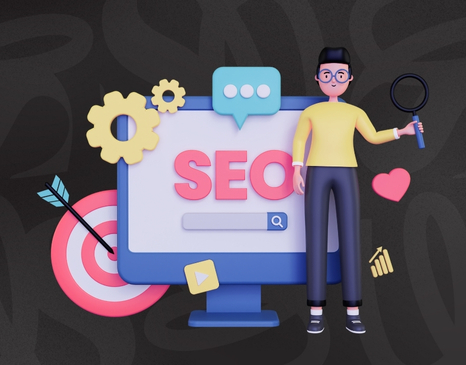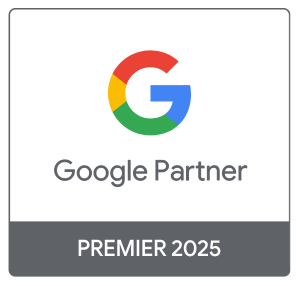Recently, our Marketing Director Extraordinaire, Jill wrote a pretty detailed blog covering the strategies you can use to drive traffic to your website. Obviously, traffic is a crucial part of getting the return on the investment you’ve made in your side.
Another crucial part of getting noticed and making the most of your website is SEO or search engine optimization. You’ve probably heard that acronym kicking around, and might have a vague idea of what it means. It’s supposed to make your business easier to find and more prominent in a Google search. But doesn’t it seem like no one actually has a straight answer for how to make that happen?
You’re not wrong. SEO changes all the time, so even some self-proclaimed experts have a little bit of trouble making sense of it all. Not to worry, though. I’m here to take you through the major elements of SEO, highlighting what to do and what not to do. By the time you’re done here, you’ll have a clear understanding of how SEO can help you. Ready? Here we go.
Should I Integrate SEO Before or After Building My Website?
Ideally, you’ll think about your SEO strategy before you build your new website. See, SEO isn’t so much about ticking boxes on a to-do list to get rankings; it’s really more of a philosophy that puts the user and their needs first. It’s all about reaching your audience effectively.
Having said that, don’t panic if you’re just getting to SEO now that your fancy new website is ready. It’s literally never too late to implement an effective SEO strategy. You may need to revisit, rebuild, or rework a few elements of your website, but the payoff is well worth a little extra work.
The best time to introduce a killer SEO strategy is right now.
On-Site SEO
An SEO campaign breaks into two distinct “parts”: onsite strategy and offsite strategy. For now, we’re going to stick to the onsite bit because it’s easier to take on, and if you do it right, it lays a foundation for your overall strategy.
You’ve probably heard words like metas, 301s, keyword density, interlinking, h-tags, sitemaps, and others kicking around the digital marketing landscape. At one point, these metrics were the lifeblood of an SEO campaign. While they’re still reasonably important now, Google’s gotten smart enough to recognize that user experience doesn’t necessarily hinge on these pretty technical components.
Let’s chat about some of the on-site factors that still make a big difference:
- Mobile experience
- Certain technical factors
- Website structure
- Page speed
- Typography
Mobile-Friendly experience
Obviously, your site’s mobile compatibility is crucial. But do you know how critical? According to SearchEngineLand.com, more than 57% of North American web traffic comes from smartphone or tablet as of June 2018.
Globally, that number climbs a little higher than 52%.
A website that doesn’t work well on a mobile device might as well not even exist. If your site isn’t optimized for mobile use, you need to rectify that before going any further.
A strong mobile experience includes:
- Content that is formatted to fit the mobile screen
- Buttons and links that can be easily activated with a finger tap
- A fast load time (more on that below)
- An easy to use navigation experience
If you could only choose one SEO element to implement, it should be your mobile experience.
Technical Elements
Keyword density (the frequency with which you use potential search terms like “dentist”) isn’t particularly important anymore. But other “legacy” technical elements still play a role in SEO. While keyword density is not an important on-site SEO element, many “legacy” technical factors, such as incorporating a sitemap.xml file, are. Some of these include:
- Accurate meta titles and descriptions
- Relevant H1 tags
- Keyword-centric URL structures
- Ideal structure: yoursite.com/service-category/service
- Example: camssite.com/photography/landscape-photography
- The inclusion of privacy policy and website terms and conditions
- Use of sitemap.xml
- Image ALT text
Website Layout
The website structure includes the overall sitemap as well as the layout for each individual page. These elements obviously impact where you put the information on the page and how easy it is for your users to find it. Ideally, your users should be able to find any piece of content in three clicks or less.
Web users want to find what they’re looking for, and they want it to be easy. If they can’t find answers within a few clicks, they’ll find it somewhere else.
The good news is, you can maintain a solid website structure by sticking to some simple rules:
- Every major service should have its own page
- Listing all your services on a single page leaves a lot of SEO value untapped
- It’s almost impossible to thoroughly cover every service on one page
- Determine pages based on topic, not on keywords
- A page about Pediatric Dental Hygiene is way more helpful for users than having a page for each relevant keyword (Children Oral Hygiene, Dental Hygiene for Kids, Infant Oral Health, etc.)
- Ensure your navigation menu is properly organized and easy to use
- Avoid busy, overly-complicated menus; users find them confusing
- Avoid menus that go beyond three levels
- Services -> Cosmetic Dentistry -> Teeth Whitening (Good)
- Services -> Cosmetic Dentistry -> In-Office Treatments -> Teeth Whitening (Bad)
Load Times
We know that page speed is a major factor in search rankings; Google has straight-up said so.
Several studies have indicated that loading speed impacts how many users will leave a site before it finishes loading. This post from Kissmetrics goes through all sorts of helpful data.
If your site takes more than 5.5 seconds to load, you need to make some changes. Try:
- Reducing the file size of image assets
- Hosting videos on third-party sites, such as YouTube, and embedding them
- Leveraging browser caching
- Employing a content delivery network, such as Cloudflare
- Lazy-loading images
Headings
When I talk about headings, I mostly mean H-tags. Three types of H-tags are worth mentioning in terms of SEO:
- H1 – The title of a page or post
- Think of the H1 as the title of a book, you should only ever have one
- Make it relevant and descriptive, using your target keyword if appropriate
- H2 – A section title
- Think of the H2 as a chapter title in your book
- Use as many as appropriate, but don’t overuse them
- Use H2’s to subdivide content into distinct sections
- H3 – A subsection title
- Think of the H3 as a subchapter title within a chapter in your book
- Use as many as appropriate (but again, don’t spam them)
- Nest H3’s under H2’s
- H2: Dental Implants / H3: Endosteal Implants
- H2: Gingivitis / H3: Symptoms of Gingivitis
H-tags aren’t really a direct SEO metric; they’re more just a handy tool to organize your content effectively. But! Organized content that’s scannable and easy to navigate is an SEO metric, so it’s still an important element.
As far as what your H-tags actually say, you might be really tempted to make them catchy or clever. That’s fine, but it’s more important that they clearly indicate what that section of content is about. If you have to choose between clear and catchy, choose clear.
Content Matters
Google has publicly said that the ranking signals they value most are: 1. content, and 2. backlinks.
It makes a lot of sense that content is number 1; Google’s job is to help users find what they’re looking for. That means they want to show searchers pages that are rich in content that’s useful and valuable to the user.
Content isn’t just words; it’s an umbrella term we use to describe all sorts of media, including videos, images and infographics, animated GIFs, and others that convey the information you want you’re trying to share. In other words, content isn’t the medium- it’s the message.
Remember Your Audience
When you’re writing your website, it’s tempting to write for yourself, or other dental professionals. You’re passionate about what you do and you want to demonstrate your knowledge. That’s awesome, and I don’t want to quell that. But sometimes, that mindset leads business owners to write very jargon-oriented content that the intended audience will probably find alienating. It’s crucial that you identify your desired reader and what they might be looking for before writing your content.
User intent is pretty much central to any successful SEO strategy. By user intent, I mean what specifically someone is looking to find when they search. As time goes by, Google gets better and better at understanding what people are after when they do a search.
As a content creator, your focus should be on building content that addresses the users’ questions, offers them useful resources, and is genuinely helpful.
Keep these things in mind when you’re writing a web page or blog:
- Will my customers want or need to know about this topic?
- What information do I need to include to make this article the best and most informative on the topic?
- Does a blog post do the topic justice, or should I consider a more visual (like an infographic) or engaging (like a video)?
- How can I help it easier for my readers to find more information?
Consider the Who, What, & Why
To speak to users effectively, you need to understand who they are, what they’re after, and why they’re looking for it. These questions deal with demographics and user intent at the same time, which provides a template for awesome content.
The next time you create content, think about these elements:
- Who is your ideal reader?
- What do they do for a living?
- What do they enjoy?
- How old are they?
- What are their values?
- What can you offer them?
- Unique information
- Industry secrets
- Tips, tricks, and time-saving opportunities
- Education/mentorship
- Why are they looking for the information you’re providing?
- How will it benefit them?
- What is keeping them up at night?
- What will they need your information for?
Content built around these questions will make a meaningful impact on users and rank better in a Google search.
Focus on Education
Finally, content needs to be education-focused. Lots of businesses create content that, probably means well, but ends up reading more like a thinly-veiled sales pitch than anything else. Your users will see right through that, and might even resent you for trying to sell them on something rather than helping them out.
Nowadays, it’s really easy to research products, businesses, and services to make sure you’re getting the best deal for your money. As a result, your users can evaluate your business and compare you to competitors without even breaking a sweat. Considering that, it’s vital that you make a good impression on readers.
Education is a far better sales tool than a sales pitch in the digital world. Help users out without asking for anything back. That way, you demonstrate the value of your brand while building loyalty and trust with users.
Educational content could be almost anything:
- How-to’s
- How to Choose the Right Frames for Your Face
- How to Clean Your Glasses
- Guides
- Guide: Everything You Need to Know About Contact Lenses
- Guide: Reducing Digital Eye Strain
- Comparisons
- Sunglasses vs. Photochromic Lenses: Which is Best For You?
- Comparing Acetate & Metal Frames
- Opinion Articles
- Why You’re Giving Yourself Eye Strain (& What to Do About It)
- Myopia is Everyone’s Problem: Here’s Why
- Q&A’s
- [Q&A] Which is the Best Type of Lens for Office Workers?
- [Q&A] 21 Common Questions About Eye Health Answered!
- Reviews
- Nikon Blue-Light Filter Review
- Eyegiene Dry Eye Face Mask Review
Try to build content that’s genuinely helpful, informative, and valuable for your users. Even though you’re not selling them on a service or product per se, you’re selling them on your expertise and brand. You’re proving to them that you care more about their well being than your financial bottom line. If you do that, there’s a pretty good chance they’ll choose you when it’s time for them to book a service.
Next Step
How Do You Know When It’s Working?
If you’ve made it this far in this absolute odyssey of a blog post, it’s probably pretty clear by now that SEO is 33% website and 66% experience. Solid content and technical capability go hand in hand, but a positive user experience is what gets you ranked.
That said, SEO takes time. That’s sort of why it has a reputation as a mysterious and magical practice. But if you use the strategies I’ve covered here and stay the course, some of that mystery will disappear, and you’ll start to move up in the search results.
Speaking of which, there are a few tools you can use to determine how well your SEO efforts are working. These free tools from Google are a good place to start.
- Google Analytics – Dive into your organic traffic under the Acquisition tab. Organic traffic refers to how many visitors came to your site through a search engine rather than advertising.
- Google Search Console – A literal conversation between Google and your website. The search console will give you information about your rankings, which keywords you’re being found for, and how much traffic each keyword is sending you.
If you’re into this SEO thing and want to pursue it more aggressively, you may want to try some third-party SEO toolsets (I recommend SEMRush), which will give you more granular data that the information you can get from Google.
Now, Use What You’ve Learned!
Okay. That was a lot. But don’t you feel like you have a way better grasp of SEO now? Take all the information I’ve just dumped into your brain, and use it to get your business on the front page!
Have fun and good luck.






